- Genre: ARPG
- Platform: PS4
- Also Available On: Windows
TL;DR
- Excellent story largely based around what it means to have a soul. Multiple endings work fantastically in keeping you coming back.
- Excellent combat that takes a mix of action and bullet hell mechanics and somehow blends them into a cohesive whole.
- Biggest downside is that enemy variety is pretty low, with the environments being fairly sparse.
Now that the winter doldrums are here, I’ve got a bit of time to get to games that should have been played before and NieR was high on the list. Having dipped my toes a bit into the overall Drakengard universe, I had some idea of what to expect but I was still surprised by how well this one was pulled off. NieR is a game that spends a lot of time making you think about what it means to actually be alive and have a soul, whether synthetic beings can actually be capable of emotion, and ultimately what would happen when you find out everything you knew was a lie. It wraps this into a fast-paced action combat system that seamlessly blends melee elements of standard ARPGs with ranged mechanics straight out of bullet hell games to create a game that is uniquely its own.
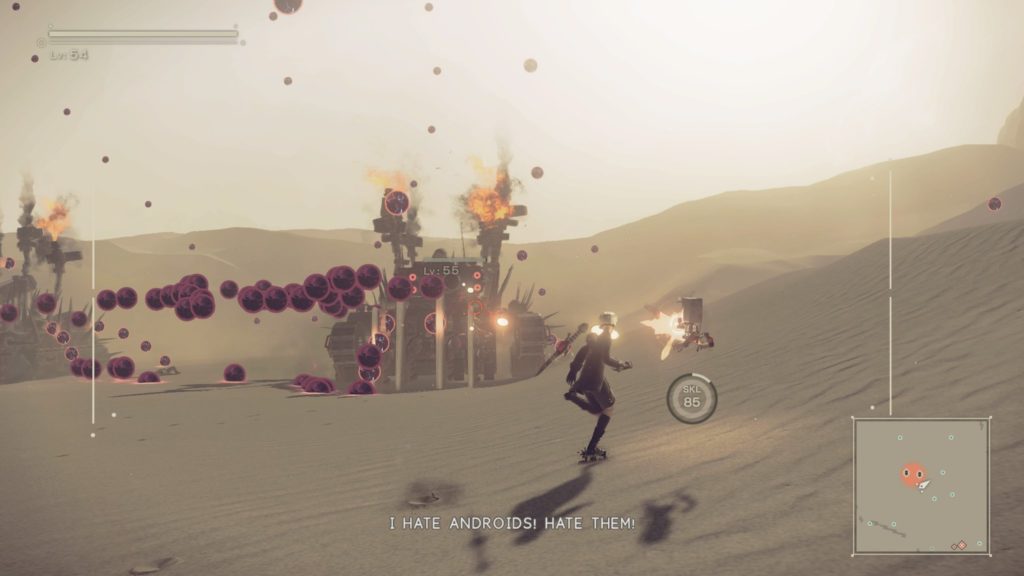
Since this is an ARPG and you’ll be spending the majority of your time involved in it, we’ll start off with combat. Rather than being a straight melee hack and slash game, NieR blends in a lot of ranged mechanics for both player and enemy to make the actual process of fighting enemies a lot more varied than is typical of the genre. Beyond the obvious picture of an enemy screen spamming bullets above, the player characters also have both a friendly pod that provides ranged damage as well as the ability on a lot of the weapons to do ranged attacks via slashing attacks that send out projectiles themselves.
The end result of all this is that directly hitting an enemy isn’t really all that important, and the movement ends up being the driving factor of battle. Regardless of what range the player is at there’s always at least some damage source that can be used, so the actual process of avoiding damage becomes the most important factor. The combination of all these attacks and an instant dodge with no cooldown gives the combat an extremely fun and fluid feel that I can’t really remember out of any other ARPG series.
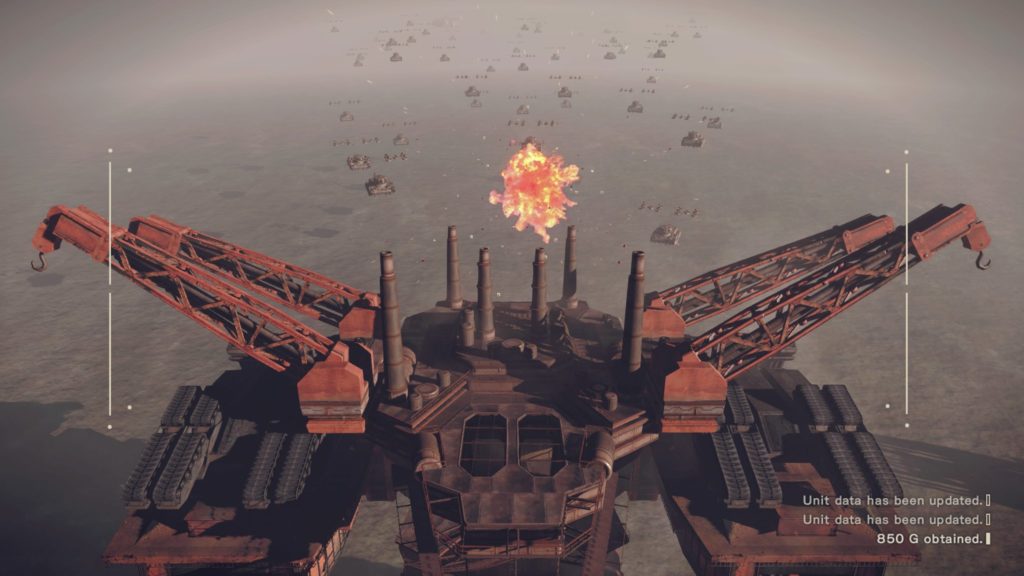
It is worth noting that other battle systems do pop up from time to time to keep the player on their toes. At times, you’ll take over giant ass robots that act as bullet sponges just for the sake of blowing lots of things up. Sometimes you’ll enter a flight suit or hacking segments and switch between both vertical scrolling and dual-stick shooter modes to take out flying enemies. Sometimes even in standard combat you end up in camera-restricted sections, giving a more side-scrolling focus to combat. Just being able to hop into all of these things on the fly kept the game fresh when it could have otherwise been a long train of the same action combat on repeat.
It’s also worth noting that all of these combat types are tied into the same fantastic gearing system. While there are the basic trappings of the genre (player level boosts base stats, weapons are upgradeable, the player’s ranged pod helper is upgradeable, etc), the real core of the system is the game’s chip system. Chips are a customizeable feature where the player can slot helper items into a board. Each item has some effect and some cost, so managing the benefits of the chips that are applied allows the player to setup the character in a style that fits how they want to play without being stuck in one path the entire game. For my playthrough, I ended up applying a few basic increases (HP, Attack Power, etc), a few HUD helpers for convenience (in particular, one that revealed items on the overworld map), and most importantly for me a passive helper that gave me 40% of my own health back on a kill. For me this meant that I could go into any encounter, dodge around like crazy killing things, and not be overly worried about taking too many hits. If I took some hits it wouldn’t be a big deal. I’d get a kill, heal up, and continue on. A more passive player could load up on HP, defense, and ranged attack power, leaving it to their pod to whittle away enemies while they stay out of danger. A real glass cannon could go heavy into attack power one shotting enemies in their way, but without any real safety if they got hit themselves.
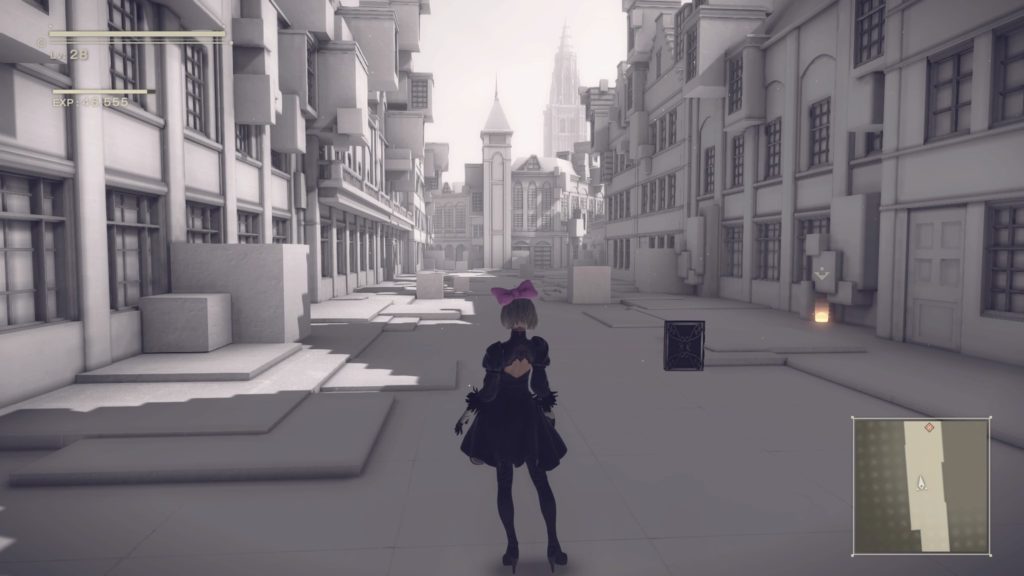
The rest of the game may not be as good as core combat, but overall the pieces are all on average pretty damn good, and certainly better than most ARPGs out there. Combat visuals are flashy but don’t interfere with the player’s ability to understand what is going on. Environments are generally kind of sparse but all look really good with solid differences in theme between them. Enemy variety is kind of low but the silhouettes always give proper immediate feedback as to what can be expected out of attacks. The soundtrack has too many instances of repeating songs but what is there is extremely well done and catchy. That’s kind of the overall end result where I can nitpick all day about specific things but end of the day what is there is all really high quality.
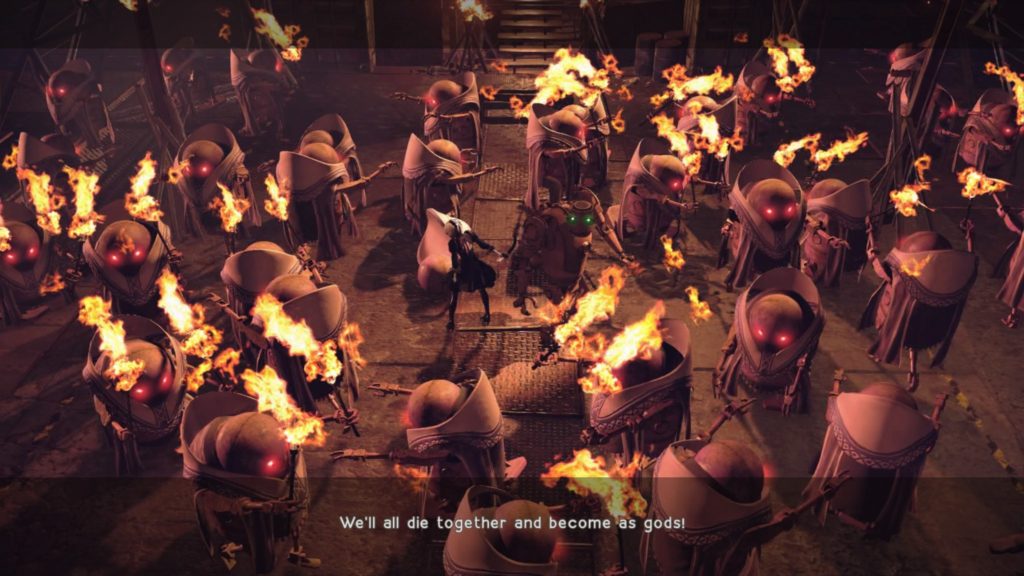
Ultimately I’d generally recommend playing this game if for no other reason than to play through the story. I really don’t want to say any more than I did in the opener to avoid spoilers, but suffice to say if you are a fan of stories that involve ponderings over the meaning of life, this one will likely stick with you. It’s also spread out over multiple characters to allow for great side-by-side comparisons of multiple viewpoints. For reference, the game plays through the first half of the story from the perspective of two main characters (listed as A and B routes in the game). It then provides a C/D route that plays through the second half of the story with two branching endings. An E route then provides an ultimate ending after the conclusion of the game. Because of the multiple viewpoints the story is able to give much greater depth to the overarching theme of what it means to truly be alive, with each character fighting their own struggle to figure it out. The rest of the alphabet is then filled with a number of secret endings, typically the result of some joke sequence. For example, the player can remove their OS core from the android player characters, immediately killing them and ending the game.
I suppose the question becomes, should I have gotten to this sooner? Ya, probably. NieR is a game that mixes a lot of action combat elements into a cohesive whole that somehow works. It adds a great sci-fi story from multiple viewpoints to keep you coming back to the game. A dash of comedy here and there keeps things light, while segments of other combat types keeps the variety strong. If you haven’t gotten to this one yet, I guess you can consider this my glowing recommendation. Just make sure you play after the first credits roll; there really is a lot more there.
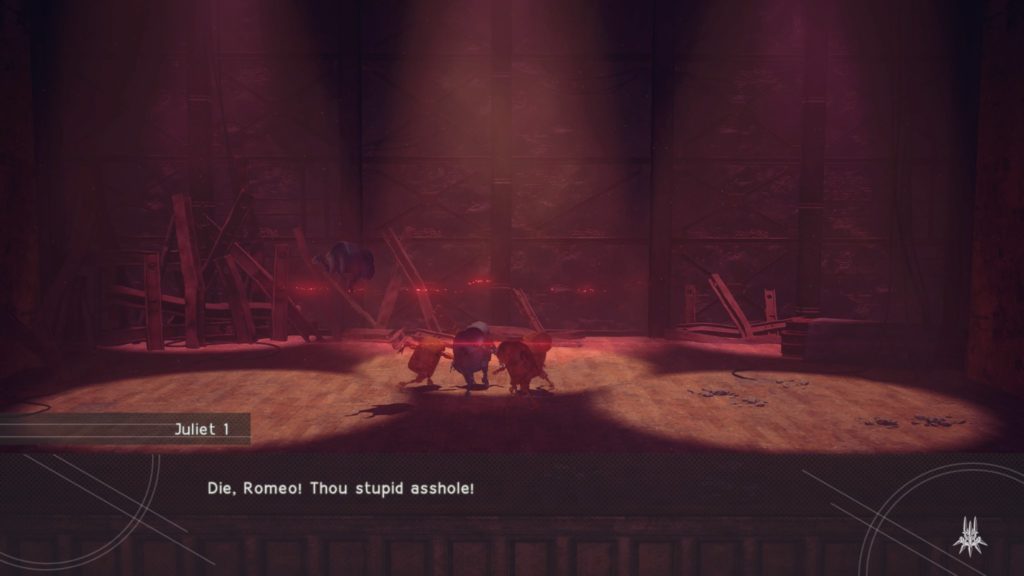

2 Replies to “Game Ramblings #64 – NieR:Automata”
Comments are closed.